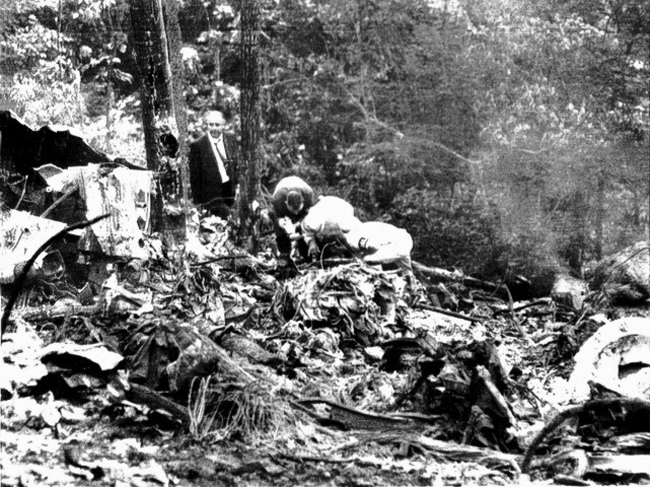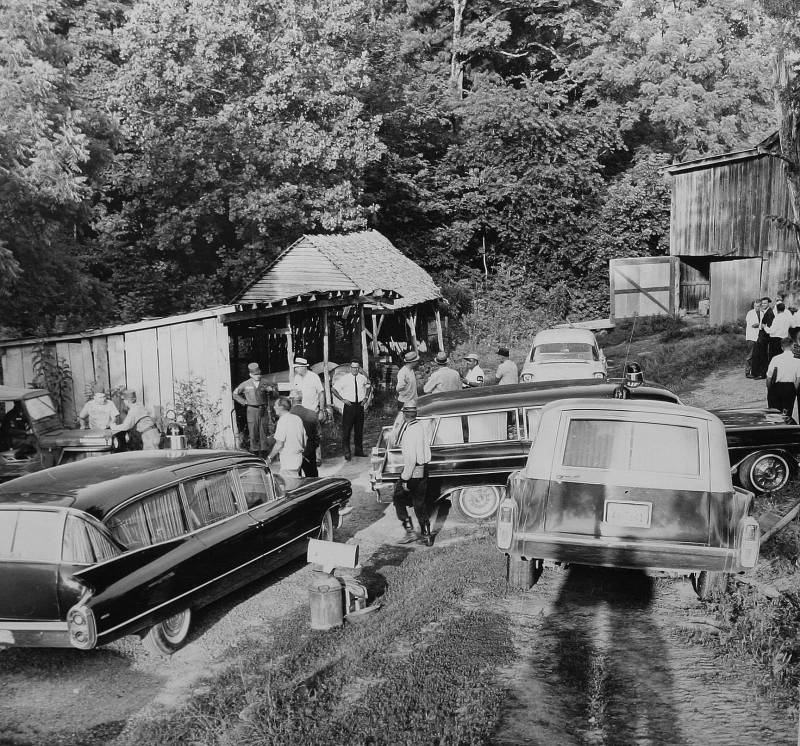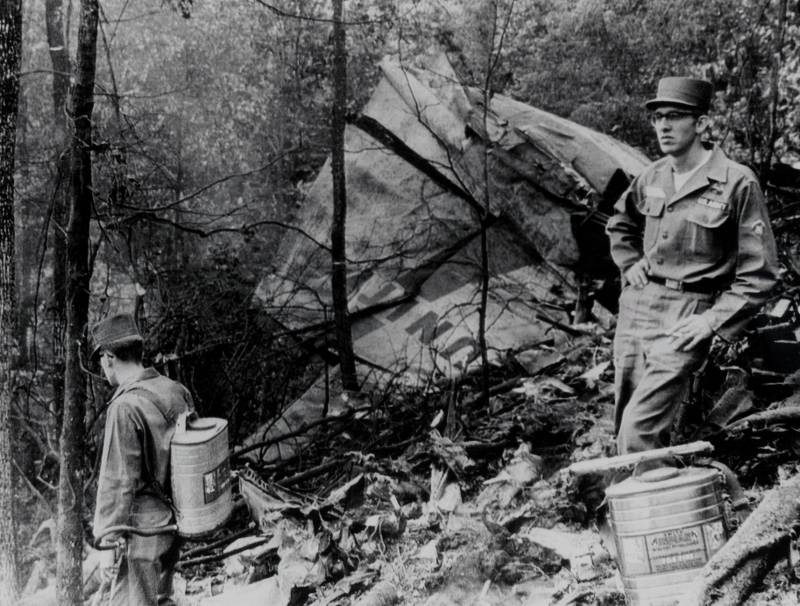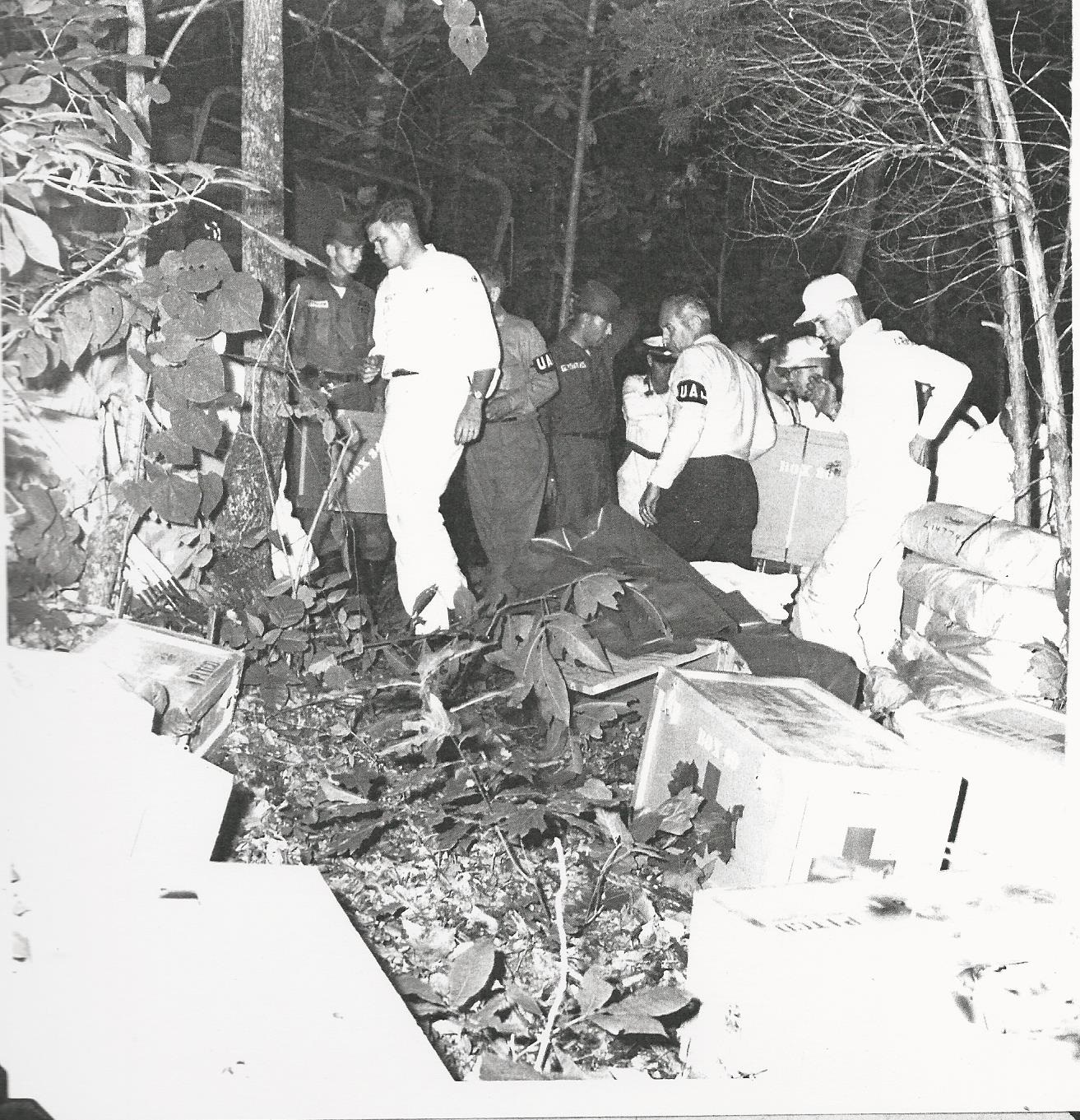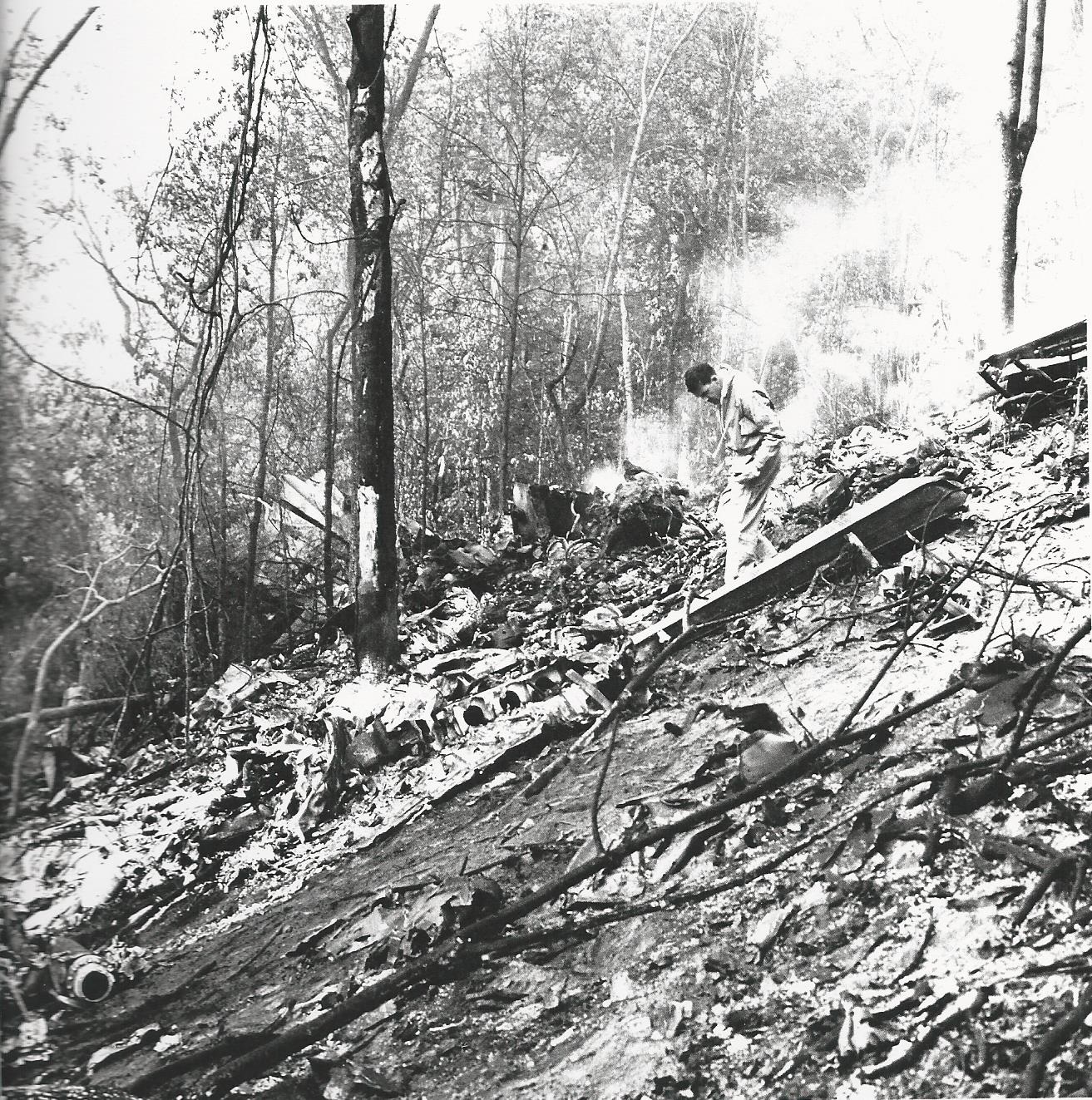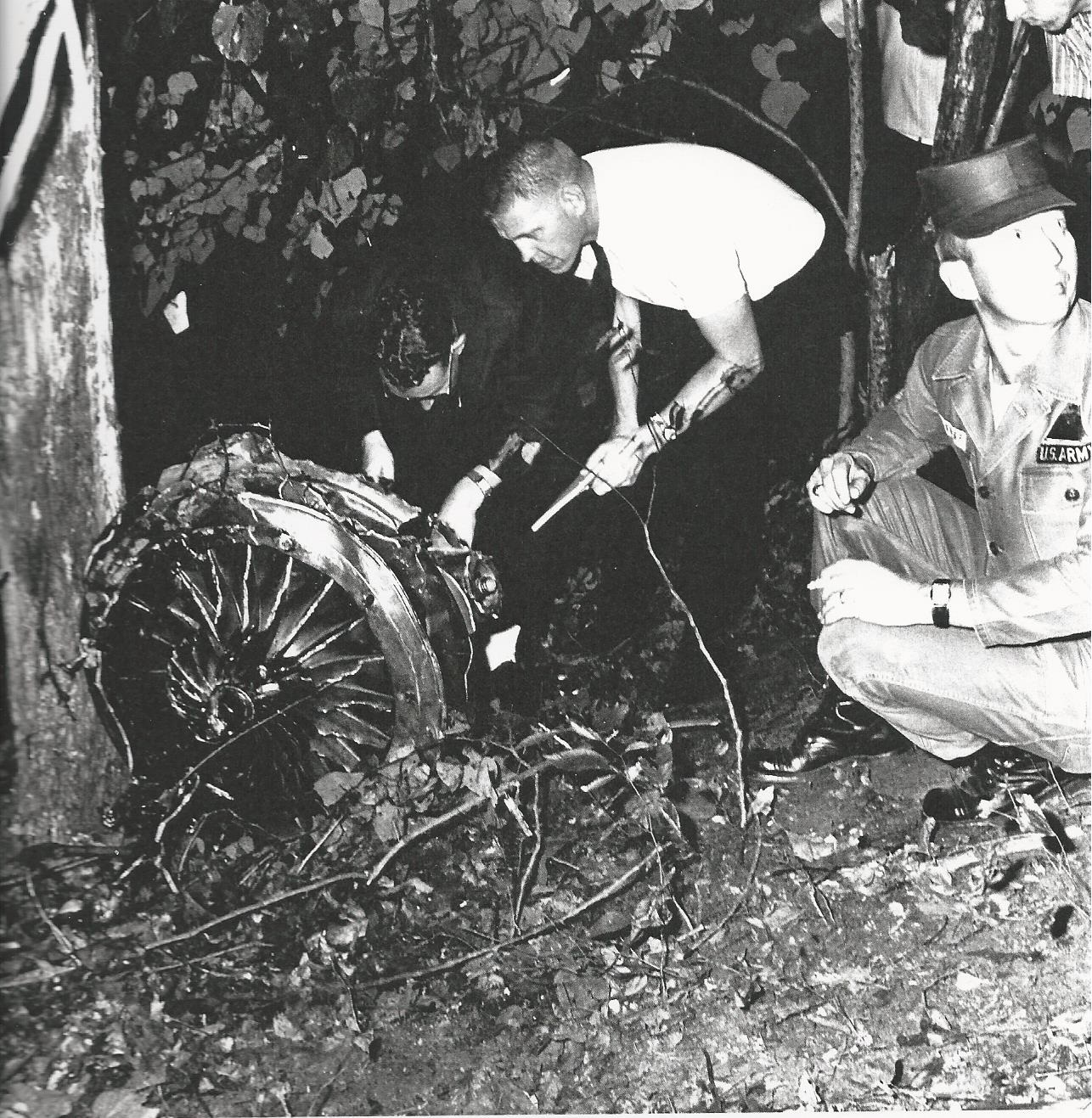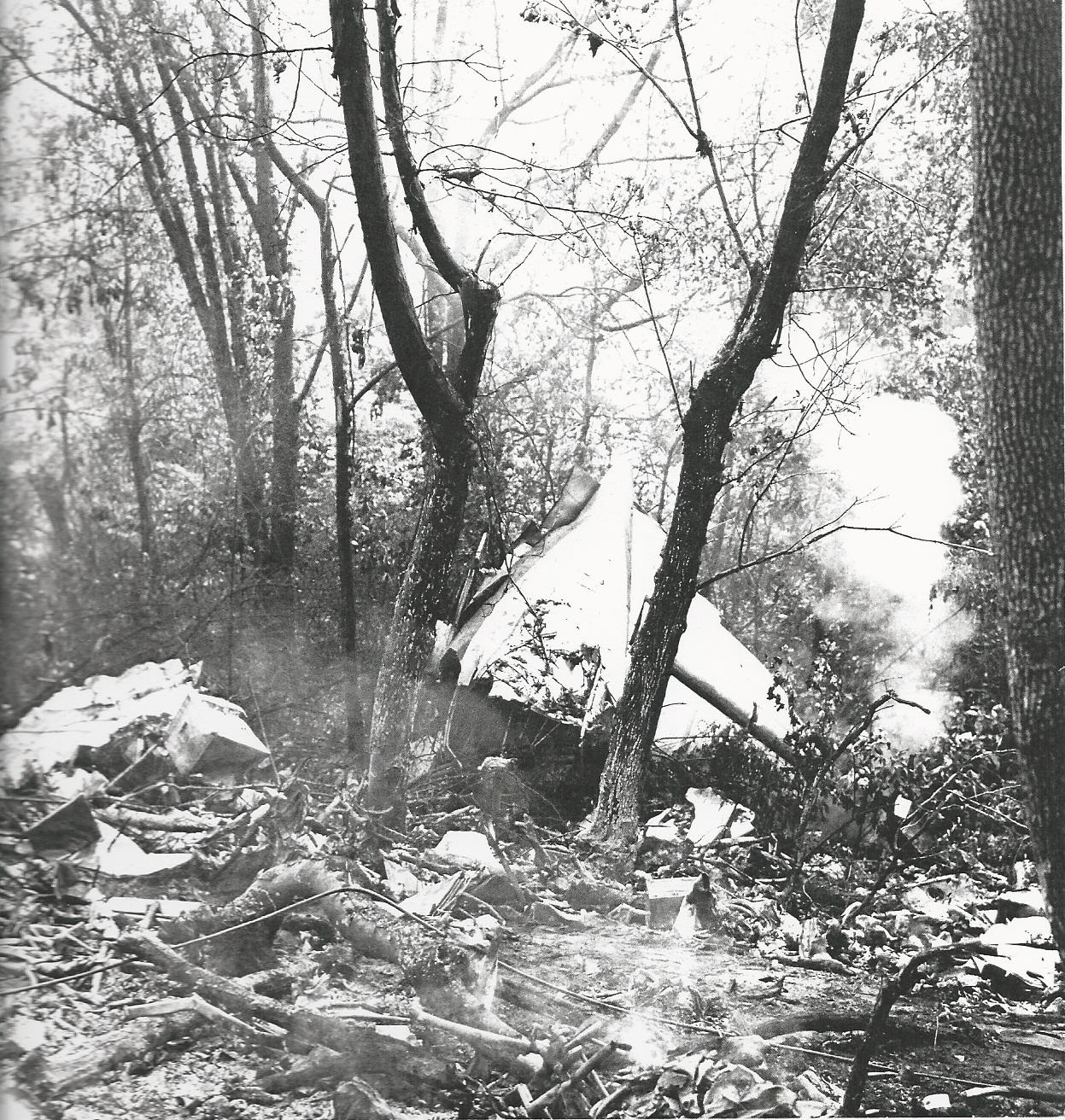Before Going Further
I would be remiss if I did not mention the great deal of respect I have for those individuals who investigated the crash at Parrottsville-whether they participated on the ground at the crash site or whether they were part of the various teams that conducted tests in laboratories, etc.
The above picture is a good indication of how difficult it had to have been to ascertain any kind of results or conclusion as to what transpired that fateful day.
Note: Man dressed in white on right, in picture above, is wearing a United Airlines “UAL” arm band.
According to one witness, twenty-three ambulances or hearses were assembled on the Trentham property at one time-some having been driven from as far away as Cleveland, Tennessee. Note the UAL arm band worn by the man above the middle vehicle. Judging by the position of shadows, it can be presumed that this photo was taken in the early morning after the crash.
Below: Seventy-Five soldiers from Ft. Campbell, KY and the local Army Reserve unit served as an integral part at the actual crash site. They also played a major part in searching the final 5 to 6 miles of the flight path for any objects that may have fallen from the aircraft.
Below: The bareheaded man in center, with UAL armband is Dr. Robert Lash the medical examiner for the FAA, based in Knoxville. A yearbook photo and brief summary of the professional life of Dr. Lash are found on the Danville (Illinois) High School Wall Of Fame: “Dr. Robert F. Lash (1925-1992), Physician and Emergency Medicine Trailblazer. Dr. Robert F. Lash, a 1943 graduate of Danville High School, distinguished himself in the area of emergency medicine. “A watchdog for disaster,” is how one long-time colleague described Dr. Lash’s role in the Knoxville, Tennessee, area. A tireless worker, Dr. Lash could be found at the site of any major wreck or disaster calmly assessing the options, then going into action. Dr. Lash’s medical career spanned four decades before his death on April 29, 1992. Dr. Lash graduated from the George Washington University School of Medicine, Washington, D.C., in 1949. He then served in the U.S. Navy. Locating in Knoxville, Tennessee, Dr. Lash served as chairperson and professor of the Department of Family Practice, director of the Family Practice Residency Program and the Emergency and Outpatient Departments, chief of staff, and from 1984 until his death, as director of Aeromedical Services (LIFESTAR). LIFESTAR, designed and named by Dr. Lash, is an acronym for Life, Shock, and Trauma Aeromedical Rescue. LIFESTAR was one of the first air ambulances. Dr. Lash became nationally known as an expert in toxicology, aerospace medicine, hypothermic injuries, snake bites, and scuba diving injuries. He investigated more than 140 aircraft accidents and delivered more than 200 lectures on medical aviation and accident investigation. After his death in 1992, the Knoxville, Tennessee, community raised in excess of $100,000 to fund the Lash Endowment of the University of Tennessee Medical Center at Knoxville in his honor. A representative of the endowment, Roger Redding, said in 1993 that, “Dr. Lash was a hero to us here in Knoxville and certainly left his mark in education and healthcare in East Tennessee.”
Below: The 45 degree slope of the hillside made for exhausting recovery efforts.
